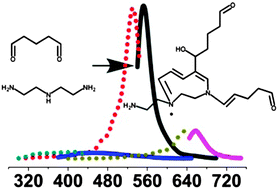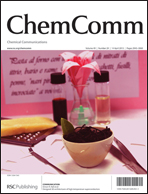Autofluorescence generation and elimination: a lesson from glutaraldehyde†
Abstract
Glutaraldehyde causes especially high autofluorescence. It reacted with proteins and peptides to generate visible to near-IR emitters. A model indicated that ethylenediamine and a secondary amine in the molecule were key components for the formation of emissive species. The mechanism enables us to control the generation and elimination of autofluorescence.


 Please wait while we load your content...
Please wait while we load your content...